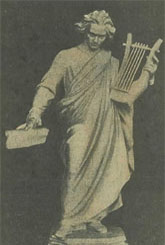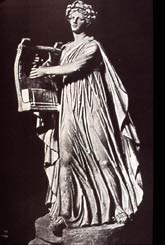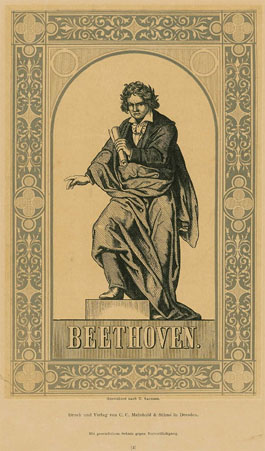1850 - 1910
Beethoven becomes an "Olympian figure"
In portraits and monuments, outstanding musical achievements of a person were traditionally expressed by adding a
lyre. This instrument, originally reserved for god Apoll and muses Erato and Terpsichore, can already be found
in 18th century depictions of musicians and composers.
On the one hand, this motive should refer to the musical context. On the other hand, a concrete relation to the
Olympian gods and muses should be established. Simultaneously, artists aimed at expressing music's divine source
of inspiration.
On a painting by Willibrord Joseph Mähler (1778-1860) the 34 year old Ludwig van Beethoven already holds a lyre in his hand. In the monuments that were to be put up for Beethoven, the composer was soon equated with Apoll. In drafts from 1845, the composer is portrayed in the large coat so typical for ancient gods and holding a lyre and sometimes even Apoll's laurel wreath. The model shown here, created by Gustav Blaeser (1813-1874) for the Bonn Beethoven monument, is a typical example for this idea.
Whereas this type of Beethoven depiction was met with criticism and deemed too heroic in the first half of the
19th century, the general taste later changed drastically. Now the theoretical link between Beethoven and the
god became more and more popular until a complete heroisation of Beethoven was reached at the end of the 19th
century.
Emil Eugen Sachse's (1828-1887) work clearly expresses the transition from the middle class Beethoven monument
from around 1850 and the heroic interpretation that came up in the second half of the century. Beethoven is
still portrayed in a standing position and wears the clothes typical for 1825. However, his coat is far more
voluminous than in older drafts and resembles the robes worn by the ancient gods. The laurel wreath in his hands
is another sign of this relation.




